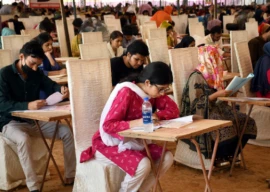
The UN system had formulated the MDGs with the aim of focusing the attention of governments and major development agencies on addressing eight specific problems afflicting developing countries, such as halving extreme poverty rates, improving mother and child health, and providing universal primary education by 2015.
Unfortunately, the progress achieved in MDG goals across the developing world has been mixed at best, and in the case of Pakistan, there is hardly any room for complacency either.
The MDGs were acknowledged as the centrepiece of development efforts by the last two governments. The need to achieve the MDGs has also been endorsed by salient macroeconomic frameworks Poverty Reduction Strategy Papers for Pakistan prepared by the Ministry of Finance and the Medium Term Development Framework prepared by the Planning Commission. The MDG’s global targets were also translated into 16 national targets and 37 indicators, keeping in view Pakistan’s specific conditions, institutional priorities and data gathering capacity.
Despite these apparent attempts ,however, Pakistan is lagging far behind in meeting most of the MDG targets. Our lacklustre performance was evident from the findings of the last countrywide MDG report prepared in 2010, and on subsequent provincial level assessments in Khyber-Pakhtunkhwa (K-P) in 2011, and the Sindh situation report for 2012, which has just been released.
Nationwide, progress has only been made on about half of the targeted indicators. K-P, which has been in the frontline of the security related problems afflicting the nation, and which has experienced internal displacements, a major earthquake and floods have not helped in keeping it on track to achieve the MDG agenda. The latest MDG assessment conducted in the Sindh government has also produced disappointing results.
According to this latest MDG report for Sindh, the province lags behind on a number of MDG indicators. The net primary enrollment ratio for 2010-11 was 53 per cent against the target of 100 per cent. Targets for health related MDGs, such as reducing the maternal mortality ratio, were also not met for the province as a whole, and especially in poorer disparities across districts
As in K-P, the Sindh government officials have defended their lacklustre performance, pointing to the consecutive years of flooding across most parts of the province. Yet, aside from the undisputed havoc caused by the natural disaster, there is ample evidence of institutional incapacity and lack of financial resolve required for achieving the MDG goals. For instance, the Sindh government failed to ensure timely completion of around 1,200 schemes related to water supply and thus, is nowhere near meeting the MDG goal of ensuring access to safe drinking water.
The current Sindh government claims it has a good chance to achieve more progress now that the province has begun getting more resources through the NFC Award. But given that the underlying structures of inequality, including feudal structures, gender biases and poor governance remain intact, it is unlikely that such optimism will produce tangible results in Sindh or in the other provinces.
Making progress on the MDG goals will become more difficult as the country comes under increasing pressure of a new IMF loan to undertake austerity measures to continue servicing our external debts, which our policymakers usually find easier to achieve by slashing development funding rather than taxing vested interests of the powerful elite within industry and the informal sector, including agriculture.
Published in The Express Tribune, July 12th, 2013.
Like Opinion & Editorial on Facebook, follow @ETOpEd on Twitter to receive all updates on all our daily pieces.











1735025557-0/Untitled-(96)1735025557-0-270x192.webp)







COMMENTS
Comments are moderated and generally will be posted if they are on-topic and not abusive.
For more information, please see our Comments FAQ